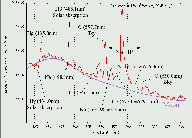 Line identification: Palomar Observatory -
May 26, Altitude=30°, Azimuth=300° - towards Los Angeles.
Line identification: Palomar Observatory -
May 26, Altitude=30°, Azimuth=300° - towards Los Angeles.
Filter U B V Rc Ic | u' g' r' i' z' λcentral(Å) 3640 4400 5470 6490 8020 | 3550 4670 6160 7470 8920 mag/arcsec2 20.6 21.1 20.5 19.9 19.2 | 20.5 20.9 20.1 19.4 18.9(all for 2.35 E-17 erg/cm2/s/arcsec2/Å average over the filter bandpass)
The Aube data indicates the following sky brightness for Palomar:
B V Rc | g' r' dark 22.4 21.3 20.9 | 22.2 20.9 1/2moon 20.2 19.9 19.9 | 19.9 19.9
Definition: 1000 S10 units = 20.38 mag/arcsec2 corresponds to Iλ= 1.37 E-8 at U, 2.17 E-8 at B, 1.18 E-8 at V, 7.40 E-9 at Rc (W/str/m2/nm)
Ref: Leinert et. al. 1997, see Table 2.
Draft Bibliography of Sky Brightness Measurements
[A Map of Light Pollution in Southern California,
Cinzano, Falchi & Elvidge: World Atlas of artificial night sky brightness]
The Aubé Palomar zenith data was taken in brighter moon than for KPNO, which accounts for most of the continuum difference. The O I 5577Å sky line appears to be fainter at Palomar than at KPNO, but the narrow & broad Sodium lines at ~5890Å, due to Low & High Pressure sodium lighting, is brighter at Palomar. The Mercury lines are also quite prominent at Palomar. The effect of Moon Down & Up is also illustrated. Interestingly the emission lines are less prominent when the Moon is up, because several illumination sources have turned off later at night. This reflects the lighting code in San Diego and Riverside Counties, which requires Class II & III lights turned off after 11pm.
In the continuum the Palomar zenith sky brightness (in bright to gray moon) corresponds roughly to 20.7 mag/square-arcsec at B, 21.0 at V, and 20.5 at R, although it is obviously brighter than that because of the emission lines. The Palomar sky is brightest (at altitude 30°) towards Los Angeles (azimuth 300°), then towards San Diego (Azimuth 200°), and faintest to the East.
 Line identification: Palomar Observatory -
May 26, Altitude=30°, Azimuth=300° - towards Los Angeles.
Line identification: Palomar Observatory -
May 26, Altitude=30°, Azimuth=300° - towards Los Angeles.
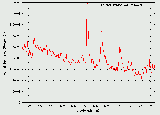 Palomar Zenith: 21600s, May
26-28. Data.
Palomar Zenith: 21600s, May
26-28. Data.
 KPNO Zenith: 21600s, May
30,31. Data.
KPNO Zenith: 21600s, May
30,31. Data.
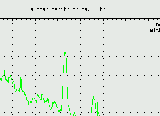 Palomar Zenith - Moon Down & Up: 3600s, May 26, 22h40 PST (up) & 01h50 (down)
Palomar Zenith - Moon Down & Up: 3600s, May 26, 22h40 PST (up) & 01h50 (down)
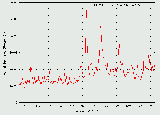 Palomar Alt=30°
AZ=120° (away from LA): 10800s, May 27,28. Data.
Palomar Alt=30°
AZ=120° (away from LA): 10800s, May 27,28. Data.
 Palomar Alt=30°
AZ=200° (towards San Diego): 14400s, May 27,28. Data.
Palomar Alt=30°
AZ=200° (towards San Diego): 14400s, May 27,28. Data.
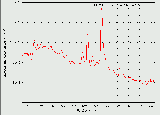 Palomar Alt=30°
AZ=300° (towards LA): 7200s, May 26. Data.
Palomar Alt=30°
AZ=300° (towards LA): 7200s, May 26. Data.
Comments to Andrew Pickles